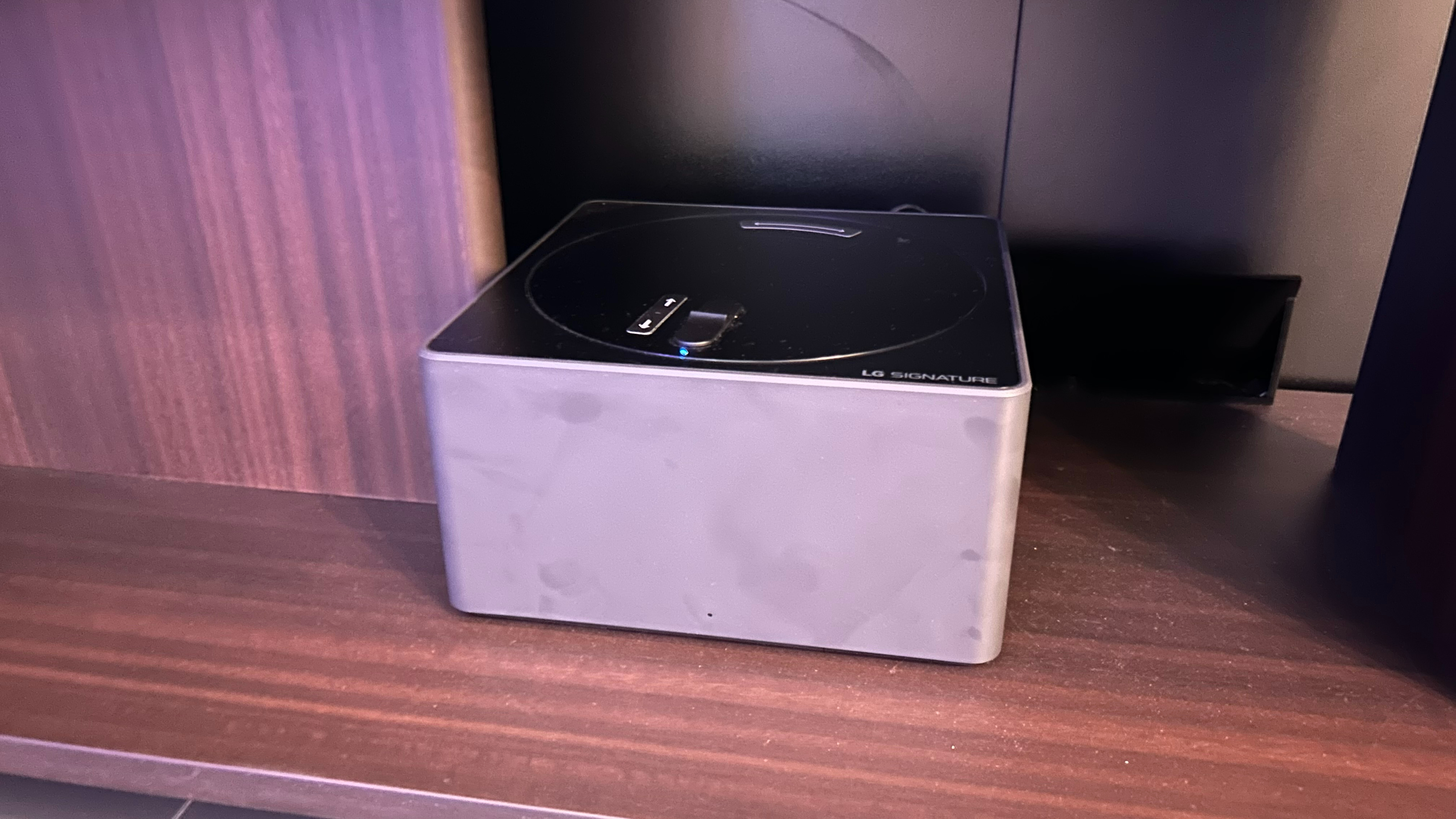The LG M3 wireless OLED TV is cool, but I'm not sure I really understand it
Samsung's One Connect solution makes more sense to me

Recently at IFA 2023, I finally came face to face with one of the most highly anticipated TVs of this year, the LG M3 OLED Wireless TV. This revolutionary new television is set to be the first wireless 4K TV, meaning that the OLED display is separate from the internal processing components and wired connectors. Surely this must have been a momentous moment, seeing a "world first" TV in the flesh – and yet, it instead confirmed my suspicions that have been mounting since it made its debut at CES 2023; I don't really get it.
Sure, it looks cool – space-age futuristic in fact – but to my mind, it's the epitome of form over function. Ultimately, my issues lie in an unavoidable truth in that (if we're being really technical) it's not really wireless is it? You still need a cable plugged into the screen and another plugged into the Zero Connect box. So any way you look at it, you're still restricted to the vicinity of your nearest plug socket. In fact, you will need two plug sockets in order to power both components of the M3 OLED; not to point out the obvious but usually you need only one.
This instantly limits how "free" you can be with the M3, as well as throwing up some curious points about how versatile the M3 OLED really is. For example, there is an eARC port on the Zero Connect box but what is it for exactly? An AVR or Dolby Atmos soundbar we presume; but that will still require an HDMI cable for wired connection.
Furthermore, you will need to place that soundbar underneath the screen ideally, meaning you have two options: either trail an overly long HDMI cable between the Zero Connect box and the soundbar; or place the Zero Connect box next to the display. Either way, you are entirely defeating the point of having a wireless TV.

The M3 also seems to share the same panel as the G3, in fact, LG practically confirms that picture performance will be identical. The same MLA-equipped OLED panel will adorn the M3 as featured on the G3, which should by all accounts be a good thing. The G3 earned a five-star review from us, so we're all for seeing how picture performance pans out, but there is the issue of cost. The potentially identical 77-inch G3 comes in at £4299, whereas its wireless sibling is an eyebrow-raising £6000; while that is cheaper than we first anticipated, it's still a steep increase all for the sake of cutting a cord or two.
Frankly, I find Samsung's solution to more accessible connectors and cable management to be much more sensible. The One Connect box, an external slab that houses the HDMI sockets alongside the other (less vital) connectors, is a much more elegant alternative as it hooks up to the TV with just one cable. Fine, it doesn't have the same range as the M3 OLED when it comes to placement as you are limited by the relatively short cable, but considering I want my ports near my TV anyway, it's no great loss to me.
Fundamentally, I just can't get to grips with the M3 Wireless OLED. I don't want to detract from innovation as I am consistently keen to see what the next big thing in TV tech will be. That being said, I would prefer these innovations to be meaningful. Perhaps I'm not the target audience, as I don't have a trendy converted loft apartment that this could be the centrepiece for, but given a modicum of thought, I just don't see the point of the M3.
Get the What Hi-Fi? Newsletter
The latest hi-fi, home cinema and tech news, reviews, buying advice and deals, direct to your inbox.
MORE;
Read our full LG G3 OLED review
And our hands-on review of the LG M3 Wireless OLED TV
And check out our picks for the best OLED TVs
Lewis Empson is a Senior Staff Writer on What Hi-Fi?. He was previously Gaming and Digital editor for Cardiff University's 'Quench Magazine', Lewis graduated in 2021 and has since worked on a selection of lifestyle magazines and regional newspapers. Outside of work, he enjoys gaming, gigs and regular cinema trips.
